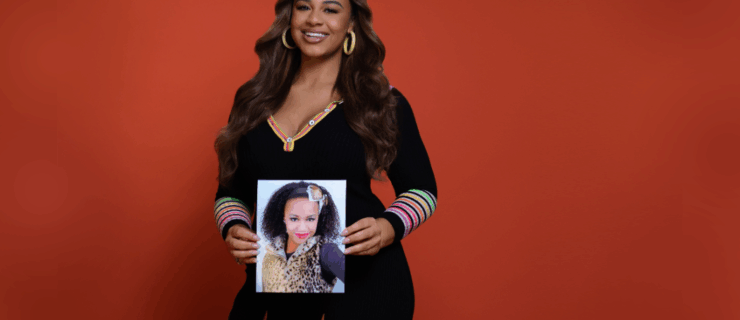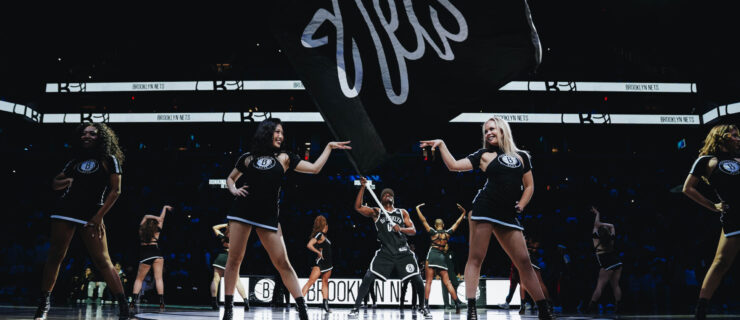4 Industry Leaders Walk Us Through the State of the Competition/ Convention World
After a year of tumult, virtual events and constantly moving targets, it’s more than reasonable to wonder: What exactly is the state of the competition world?
For months, we didn’t see our favorite friends and teachers unless it was through a screen—now, against all odds, programs are rising from the ashes to bring you meaningful training and performance opportunities both in person and online. We asked four prominent competition/convention directors to give you the inside scoop on what to expect from this season (and, yes, that includes Nationals).
First: Things are going to be OK
If you ask leadership from 24Seven, NYCDA, Showstopper or Radix Dance Convention, the trajectory of the dance convention/competition world is on the upswing. “As numbers improve and restrictions are eased, we’re ready to kick it into high gear,” says Radix director Eddie Strachan.
Programs have returned to their regional tours, tackling unique pandemic hurdles as they strive to create as “normal” an event as possible. “Things are definitely looking up,” says 24Seven director Danny Lawn. “For us, an event this past weekend felt as close to normal as it has in a long time.”
According to Nikki Cole, director of marketing and media relations for Showstopper, the competition world is an inspirational place to be right now. “The dance community has come together in remarkable ways to bring positivity, hope and light to dance studios by getting kids back onstage,” she says.
Right, but what about Nationals?
Good news! Every competition/convention we’ve spoken with is committed to hosting Nationals this year, one way or another.
COVID willing, Showstopper, Radix and The Dance Awards all hope to hold a normal Nationals (you know, in-person), but it’s important to remember that things are always subject to change. “We are ready to hold Nationals as normally as possible, but if we still need to have safety protocols in place during that time, then so be it,” Strachan says. “We are just trying to push through each month to see what the next one brings.”
Capacity for both the Florida and Las Vegas Dance Awards is still to be determined by the tide of the pandemic, but as of right now, registration is open to those who are interested. Regardless, Lawn says dancers can anticipate something magical. “The directors are so good at shifting plans and making everything special,” he says.
For NYCDA, things will look a little different. Rather than hosting one event in NYC, director Joe Lanteri has decided to hold two separate summer events: one in Phoenix, AZ, and one in Orlando, FL. “We are committed to making it feel like a true NYCDA Nationals,” Lanteri says. That means it will still include award-winning choreographers, artistic directors and college-scholarship auditions. Safety precautions that have been a staple throughout the year will continue, but the details of how many dancers can attend are still to be determined by the ever-changing state of the pandemic.

Okay, so what does “in-person” actually look like these days?
Schedule Shakeup
In order to host as many dancers as possible, and avoid cross-contamination between studios, scheduling at conventions and competitions is a bit different this year.
“If you’re only allowed 200 dancers in the venue at a time, that’s really limiting for four different age groups,” Lanteri says. NYCDA’s workaround? In some venues, a split schedule. Morning classes are reserved for mini and junior dancers to take class, and the rest of the day is reserved for teen and senior dancers. “That alone doubles our capacity.”
In order to avoid eating and congregating en masse, 24Seven is staggering lunch times, as well as class start and end times.
The takeaway?
First, pay close attention to the schedule the competition gives you: It’s going to be different from years past.
Second, if you have a younger sibling, your parent or guardian will likely be running back and forth like crazy all weekend, so be sure to tell them how much you appreciate them.
Mask Up, Temperature Check and Complete That Health Survey!
These days, your mask is your golden ticket to any convention or competition. Other than the moments immediately before you walk onstage to compete, and immediately after you finish, your mask will be on your face for the entire weekend. (Some cities even require them onstage.)
“We completely understand that none of us like to wear masks,” Strachan says. “But we all like to dance in person, so if that is what it takes, that is what we have to do.”
Beyond masks, regular temperature checks are required to participate at the majority of events, as well. And NYCDA teachers and staff are going the extra mile to keep you safe. “We have a partnership with a testing lab, so every week, everyone on the NYCDA team is PCR tested before they get on an airplane,” Lanteri says. “The lab sends someone out to the cities with us, and most of us test again while we’re there. I personally also test every Monday when I get back to my home base.”
NYCDA also requires each of their dancers and attendees to fill out a wellness survey every day along with getting a temperature check. This gives them access to a wristband that shows they’re clear to participate.
The takeaway?
These competitions and conventions aren’t messing around. Nothing is more important to them than your safety.

Class Staging
The current industry standard for conventions is to require six feet of space between each dancer. Events maintain this by taping 6-foot-by-6-foot squares on the ground that the students are asked to dance in. “I love looking out into a sea of clean lines with everyone in their spot,” says Lawn. “In that sense, it’s kinda fierce.”
Most conventions begin the weekend by dividing the participants into combo groups that will be used throughout the weekend. This keeps the dancers from crossing paths as they move on and off the floor, and limits potential exposure between groups as they observe.
In a major shift from years past, dancers may no longer be asked to go onstage next to the teacher to demonstrate, depending on the size of the ballroom. “We keep the stage as clear as possible,” Lawn says of 24Seven.
The takeaway?
You’ve practiced perfect spacing your entire life—you were born for this.
Studio Blocks
In order to avoid contact between studios and keep numbers in the venue low, most competitions currently have schools compete all their numbers, one right after the other during a single block of time.
“Studios A, B and C may compete during a three-hour chunk of time,” Strachan says. “Then we clear them out of the ballroom and sanitize the stage and dressing rooms before the next set of studios come in to dance their block.” At Radix, security has a list of people in each given block, and checks who they are before they’re allowed to enter the ballroom.
At 24Seven, solos follow the same studio-block pattern as group numbers. All mini and junior solos from studio A will go back-to-back, followed by studios B and C, before the room is cleaned for the next block. “We call everyone beforehand to make sure they are comfortable sharing a block with other studios,” Lawn says.
The takeaway?
You’re gonna be pretty tired after running your dances consecutively. Bring a good energy booster to snack on!

Exclusive In-Person Performances, Online Entourages
Just as there is less space for performers at competition these days, there’s also less space for audience members. For those who can attend, competitions are spreading chairs out for social-distancing purposes. Showstopper audiences sit at round tables spread out across the room in watch groups.
For those who can’t attend in person due to capacity or proximity, the majority of competitions livestream the event.
The takeaway?
The fewer people there are, the safer you’ll be. But you’ll still get virtual hype from loved ones.
Socially Distanced Awards
Most competitions aren’t hosting in-person awards, but you can stream them online. At competitions like Radix and NYCDA, all the awards for each studio are placed in a box or a souvenir bag that your studio owner or teacher can pick up later.
For Showstopper, in-person awards are possible, they just have to be done more frequently. “In years past we would have had 3-4 award ceremonies, now we do 10,” Cole says. “This means when we finish each category (like Teen Small Groups), we do an award ceremony before moving on to the next one.” According to Cole, parents really appreciate this new structure. “They don’t have to sit and wait around all day if they don’t want to,” she says.
The takeaway?
You can officially watch the awards ceremony from your bed with zero shame.




